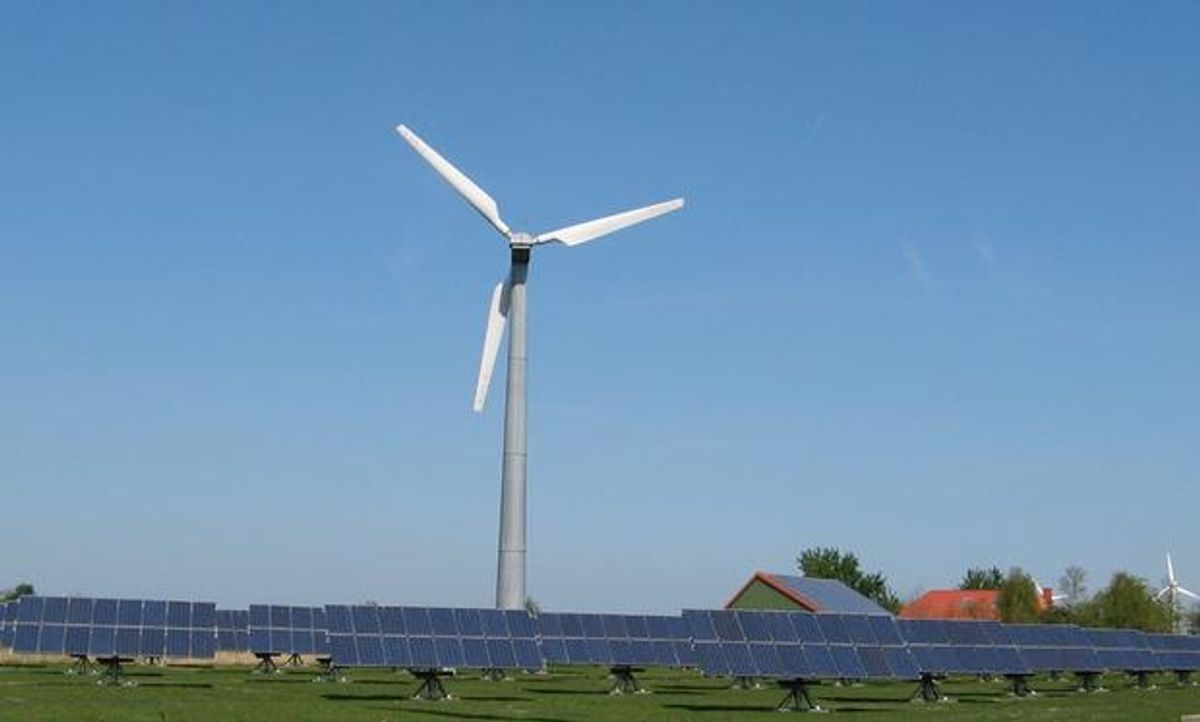Intermittency may be a problem for an individual wind farm or solar power plant, but a diverse array of renewable energy systems—coupled with storage in the form of batteries or hydrogen tanks—apparently wouldn't suffer such issues.
A study by researchers at the University of Delaware modeled how well renewables could sustain a big chunk of the U.S. grid—72 gigawatts worth, where the entire country has a capacity just north of 1000 GW—and found as high as 99.9 percent reliability at reasonable costs.
The Delaware researchers evaluated 28 billion combinations of renewable energy and storage, modeled out over a theoretical four-year period using historical weather and electricity load requirement data. "At 2030 technology costs and with excess electricity displacing natural gas, we find that the electric system can be powered 90 to 99.9 percent of hours entirely on renewable electricity, at costs comparable to today's," the authors wrote. Senior author Willett Kempton has long pushed for vehicle-to-grid (V2G) systems in which plugged in electric vehicles can provide power back to the grid.
The various cost combinations of power and storage carefully omitted government subsidies (wisely, given the imminent demise of the wind power production tax credit), and compared them to today's fossil fuel generation costs. The 99.9 percent figure can be achieved with, for example, 17 GW of solar power, 68 GW of offshore wind, and 115 GW of onshore wind. The most cost-effective solutions featured huge excesses of generation capacity—up to three times the load requirements at times—in order to minimize costly power storage additions. The authors wrote that "at 2030 technology costs, 90 percent of load hours are met at electric costs below today's."
These are encouraging results, given the oft-repeated criticisms involving intermittency and cost, but that doesn't make it easy to achieve. At present, the United States has just over 51 GW of onshore wind and somewhere between 6 and 7 GW of solar generating capacity. Offshore wind, of course, still sits at a grand total of zero gigawatts. But knowing that a huge jump toward renewables and away from fossil fuel generation won't somehow destabilize the grid could help that jump happen.
Image via Dirk Ingo Franke
Dave Levitan is the science writer for FactCheck.org, where he investigates the false and misleading claims about science that U.S. politicians occasionally make.



